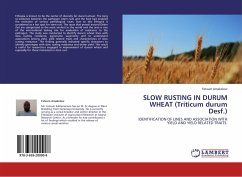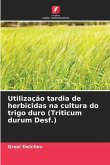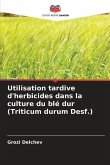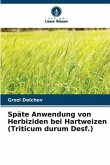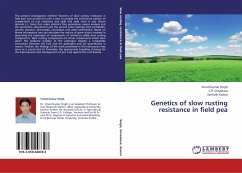Ethiopia is known to be the center of diversity for durum wheat. The long co-existence between the pathogen (stem rust) and the host had enabled the evolution of various pathological races. Due to this Ethiopia is considered as a hot spot for stem rust. The races that prevail around Debre Zeit are categorized as the most virulent in the world and the area is one of the international testing site for evaluation of resistance to the pathogen. The study was conducted to identify durum wheat lines with slow rusting resistance, agronomic superiority and to understand associations among yield, yield related traits and characteristics of slow rusting resistance. The finding generally indicated specific characters to identify genotypes with slow rusting resistance and better yield. This result is useful for researchers engaged in improvement of durum wheat and especially for those interested in stem rust.
